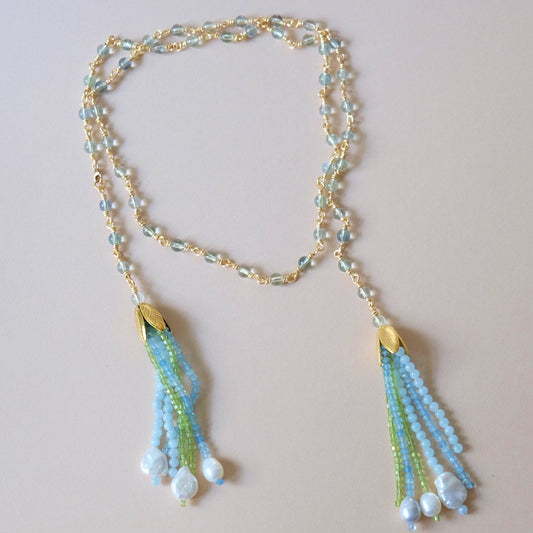Chrysoprase is a variety of chalcedonies. It is a green colored gemstone varied from apple-green to a dingy greenish yellow owes it hue to the presence of nickel, either as oxide or as silicate. Chrysoprase is usually cut into cabochons, or as beads. The material was popular in the Victorian era and the stones were often cut as low cabochons with a narrow rim of facets around the edge.
The State of Goias, Brazil, supplies chrysoprase, and a deep green, but somewhat more opaque material was found in 1965 in the Marlborough district some 90 miles from Rockhampton in Queensland, Australia.
Chrysoprase is one of the birthstones for May and has traditionally symbolized happiness, enterprise and prudence. It is a powerful stone that brings good fortune and prosperity. It instills you with poise, grace and helps you to recognize the gentle beauty within yourself so you can enjoy self-expression and courage through fluent speech and mental dexterity.
Chrysoprase gemstones can be safely cleaned using warm soapy water and a soft cloth. You should keep it away from harsh household chemicals. Chrysoprase will fade if exposed to prolonged direct sunlight. Some faded color may be recovered through dark, moist storage.
In addition to being a birthstone for May and symbolizing happiness, enterprise and prudence, chrysoprase is also believed to have healing properties. It is said to be particularly beneficial for heart health and emotional well-being, as well as for promoting positive relationships and emotional stability. Some people also use chrysoprase to help with issues related to the immune system, such as allergies, and to help with sleep disorders.
Chrysoprase is a relatively hard gemstone, with a Mohs hardness of 6.5-7. It is considered to be a durable gemstone that can be worn in jewelry without much worry of damage. However, it should be protected from scratches and sharp blows.
Another aspect of chrysoprase that is worth mentioning is that it is a relatively rare gemstone. While it can be found in a few different locations around the world, such as Brazil and Australia, the deposits are typically small and the quality of the gemstones can be quite variable. This means that high-quality chrysoprase can be relatively expensive, and it may be difficult to find a large or high-quality specimen.








